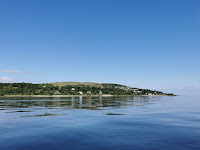We’re spending a few months touring Spain in a motorhome, my husband and I. This is the third time we’ve done this, and it’s such a wonderful way to escape England’s grey, drizzly winter days. He’s retired and I can write anywhere, so we’re lucky to be able to do it.
Away from home, away from the TV – of course we end up reading a lot. We both have Kindles but we also read paperbacks. One thing we’ve discovered is that it’s amazingly easy to find English-language books to read while away in Spain, particularly while on the Costas.
There are a lot of northern Europeans who, like us, seek out the warmth of southern Spain for winter. British and Irish, Germans, Scandinavians, Swiss and Dutch people in abundance. And all bring books with them and then need more to read later in their trips.
In the larger supermarkets, such as Carrefour’s hypermarkets, you can buy books in various languages. All the big name authors will be represented, but you’ll be paying a premium for these books – no discounts at all!
Alternatively some street markets will have stalls selling second hand books for about a euro each. I’ve spent plenty of time happily browsing what’s available there, and yes, I’ll admit, I always check if any of my own books have made it out to Spain! (Never spotted one yet.)
Another option is to use the various book-swap facilities around. Many campsites will have a few shelves of books in various languages, and I’ve also seen them in coffee shops or just in tiny huts in town squares. The deal is you leave one, and take another. Some volumes look as though they’ve been kicking around Spain for years, being passed on over and over again.
One campsite I know well closed down its bookshelves during the Covid crisis. Even so, long term campsite residents found ways to pass on books. When read, a book would be left by the communal washing up sinks. You could guarantee it’d be picked up by someone else within a day.
I’ve found that reading books from book-swaps has introduced me to new authors. There’s a limited choice, of course, which will force you out of your reading comfort zone and get you to try something new. Also, campsite friends of various nationalities have passed interesting books on to me – the quirky but compelling books of Carlos Ruiz Zafon for example, and The Sixteen Trees of the Somme by Lars Mytting was given to me by a Norwegian friend who’d read it both in Norwegian and English. (And oh wow, what a fabulous book that was!)
So now when we come to Spain for the winter, we bring a selection of paperbacks that we know we’ll be happy to pass on when read. And we’ll keep our minds open as to what we’ll pick up in exchange for them!



.jpg)






.jpg)
.jpg)














































